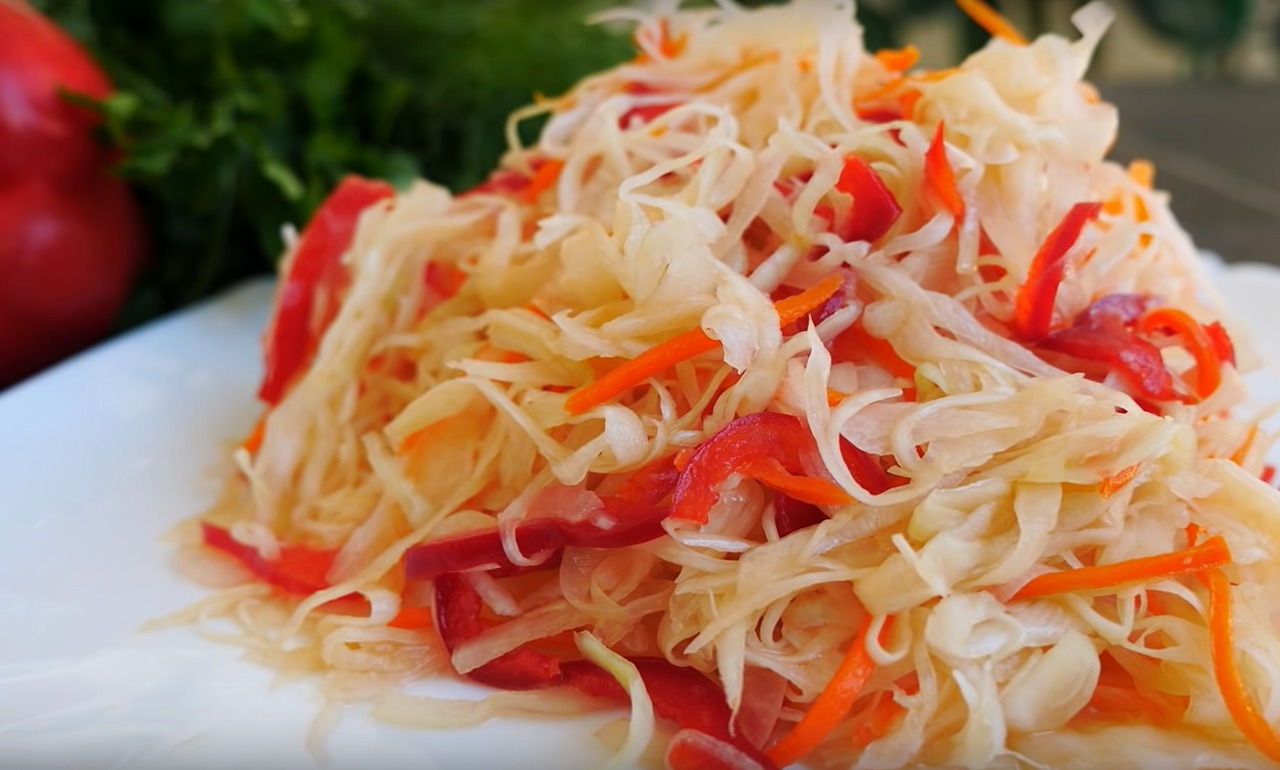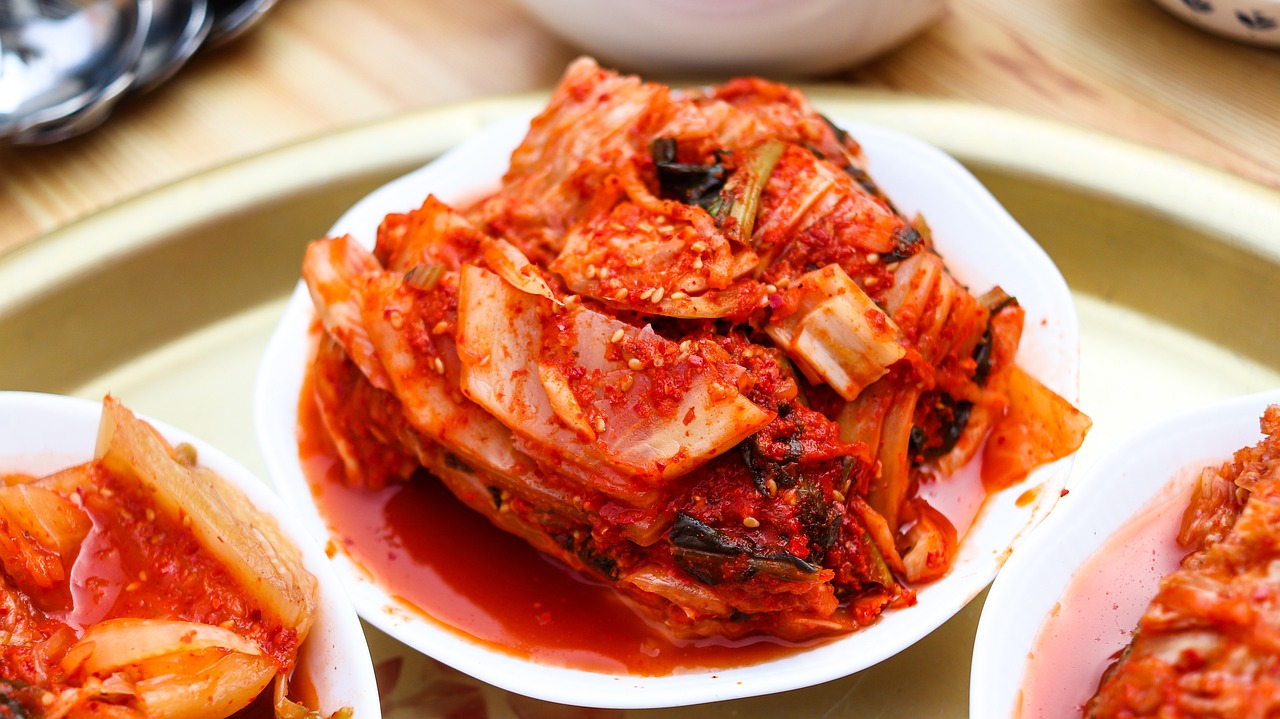Korean Kimchi: Spicy Fermented Cabbage

Kimchi, the fiery and tangy delight of Korean cuisine, is a dish that tantalizes the taste buds with its explosive flavors. This traditional fermented cabbage dish has been a staple in Korean households for generations, offering a unique blend of spiciness and sourness that sets it apart from any other dish. As you delve into the world of kimchi, you'll uncover a rich history, a diverse range of ingredients, and a fascinating fermentation process that gives this dish its distinct character.
History of Kimchi
The history of kimchi dates back centuries, originating as a simple method of preserving vegetables in Korea. Initially, kimchi was made by fermenting vegetables in jars buried underground during the cold winter months to ensure a year-round food supply. Over time, this preservation technique transformed into a beloved culinary tradition that holds a significant place in Korean culture.
Throughout history, kimchi has evolved from a necessity for survival to a symbol of Korean identity. Its popularity grew as the dish became more diverse, with each region in Korea developing its unique variations of kimchi. From the spicy and pungent flavors of the traditional kimchi to the milder and sweeter versions found in certain areas, the history of kimchi reflects the rich tapestry of Korean culinary heritage.
Ingredients in Kimchi
When it comes to creating the flavorful and tangy Korean dish of kimchi, the key lies in the selection of ingredients. Each component plays a crucial role in contributing to the overall taste and texture of this beloved dish.
One of the primary ingredients in kimchi is napa cabbage, which serves as the base for the dish. The cabbage is typically cut into pieces and then fermented with a mixture of spices and seasonings, resulting in its signature crunchy texture.
Another essential component of kimchi is radish, which adds a refreshing and slightly spicy element to the dish. The radish is often sliced or grated and mixed with the cabbage to enhance the overall flavor profile.
Scallions are also commonly used in kimchi, providing a mild onion-like flavor and a hint of freshness. These green onions add a pop of color to the dish and contribute to its aromatic qualities.
Garlic and ginger are two key ingredients that bring depth and complexity to kimchi. The combination of these aromatic spices adds a savory and pungent flavor to the dish, enhancing its overall richness.
To achieve the signature spiciness of kimchi, red pepper flakes are essential. These fiery flakes are responsible for the dish's characteristic heat, balancing out the other flavors and creating a harmonious blend of spicy and tangy notes.
When these ingredients are combined in the right proportions and allowed to ferment together, they create a symphony of flavors that make kimchi a truly unique and delicious dish. The careful selection and preparation of each component are what elevate kimchi from a simple side dish to a culinary masterpiece.
Health Benefits of Kimchi
When it comes to the health benefits of kimchi, this fiery fermented dish packs a powerful punch. Let's dive into why kimchi is not only delicious but also incredibly good for you.
First and foremost, kimchi is renowned for its probiotic properties. The fermentation process involved in making kimchi leads to the growth of beneficial bacteria, known as probiotics, which are essential for gut health. By consuming kimchi regularly, you can promote a healthy balance of gut bacteria, aiding in digestion and overall well-being.
Moreover, kimchi is a nutritional powerhouse, loaded with vitamins, minerals, and antioxidants. Cabbage, the primary ingredient in kimchi, is rich in vitamin C, vitamin K, and fiber, while garlic and ginger add immune-boosting properties. This nutrient-dense combination makes kimchi a superfood that can support your body's health on multiple levels.
Additionally, the spicy kick of kimchi comes from red pepper flakes, which contain capsaicin, known for its metabolism-boosting and anti-inflammatory effects. This compound not only adds flavor to kimchi but also contributes to its potential health benefits, such as aiding in weight management and reducing inflammation in the body.
For those looking to improve their digestive health, kimchi is a go-to option. The live cultures present in fermented foods like kimchi can help maintain a healthy gut microbiome, which is crucial for proper digestion and nutrient absorption. By incorporating kimchi into your diet, you can support your digestive system and enhance your overall health.
In conclusion, the health benefits of kimchi extend far beyond its delicious taste. From promoting gut health and providing essential nutrients to boosting metabolism and reducing inflammation, kimchi truly stands out as a nutritional powerhouse. So, why not spice up your meals with a serving of this traditional Korean delight and reap the numerous health rewards it has to offer?
Kimchi-Making Process
When it comes to the Kimchi-making process, it's not just about mixing ingredients together. It's a delicate dance of flavors and fermentation that results in the iconic dish loved by many. Let's dive into the steps involved in creating this spicy and tangy delicacy.
1. Gathering the Ingredients: The first step in making Kimchi is gathering all the necessary ingredients. From fresh napa cabbage to pungent garlic and fiery red pepper flakes, each component plays a crucial role in the final taste of the dish.
2. Prepping the Vegetables: Once you have all the ingredients ready, it's time to prep the vegetables. This involves washing and cutting the napa cabbage, radish, and scallions into the desired sizes. The vegetables are then salted to draw out excess moisture and enhance their flavors.
3. Making the Kimchi Paste: The heart of Kimchi lies in its flavorful paste. A mixture of garlic, ginger, red pepper flakes, and other seasonings is combined to create a spicy and aromatic paste that will be used to coat the vegetables.
4. Layering and Fermentation: The next step is layering the vegetables with the Kimchi paste in a container. Each layer is carefully packed to ensure that the flavors meld together during the fermentation process. The container is then sealed and left to ferment for a specific period, allowing the flavors to develop.
5. Storing and Enjoying: After the fermentation period is over, the Kimchi is ready to be enjoyed. It can be stored in the refrigerator to slow down the fermentation process and prolong its shelf life. Kimchi can be served as a side dish, added to soups, stews, or even used in various recipes to add a kick of flavor.
By following these steps, you can create your batch of homemade Kimchi, filled with bold flavors and the goodness of fermentation. The process may take time and patience, but the end result is a culinary explosion that is sure to surprise your taste buds.



 HazalVardal
HazalVardal 





